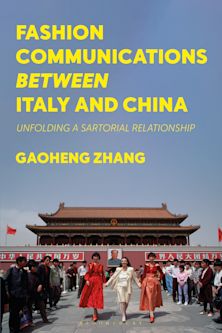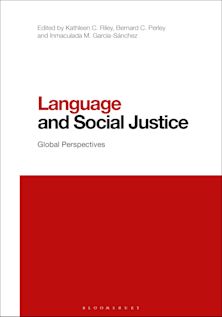- Home
- ACADEMIC
- Anthropology
- Cultural Anthropology
- Barrio San Siro
Barrio San Siro
Structural Violence in the Peripheries of Milan
Barrio San Siro
Structural Violence in the Peripheries of Milan
This product is usually dispatched within 1 week
- Delivery and returns info
-
Free US delivery on orders $35 or over
You must sign in to add this item to your wishlist. Please sign in or create an account
Description
Barrio San Siro: Structural Violence in the Peripheries of Milan collects the results of five years of ethnographic research in San Siro, one of Milan’s largest public housing neighborhoods. It is a study that moves from a relational conception of urban space to analyze the structural violence that affects the margins of the Lombard capital, among the folds of the rhetoric of its development, its “rebirth”, and its regeneration. Alongside “second-generation” youngsters, “abandoned” elderly people, struggling committees, associations, politicians, and officials, “Barrio San Siro” develops a multi-level interpretation that moves from everyday practices to local, regional and national policies. Like other Milanese peripheral neighborhoods, San Siro emerges – page after page – as a multicultural socio-spatial configuration, at once the epitome of global conditions, the intersection of diverging interests of social and institutional actors, the result of a local history that has led to a post-Fordist and neoliberal present. A critical and reflexive narrative, a monograph that from an urban margin elaborates its idea of the anthropology of the city.
Table of Contents
Foreword: The Reality of the Urban by Dennis Rodgers
Acknowledgments
Introduction: The Violence of Space
Part I: Abandonment
Chapter 1: Where are the Institutions
Chapter 2: When Interlocutors Die
Part II: Stigma
Chapter 3: On Terrorism and Other Ghosts
Chapter 4: Scraps, Rubble, Waste
Chapter 5: Daniel and Others in the “Zone”
Part III: Social Suffering and Vulnerability
Chapter 6: Anna, Donata and Sandra
Chapter 7: Life of Samith
Part IV: Other Policies
Chapter 8: Schools between Social Reproduction and Inclusion
Chapter 9: One Street, Two Regeneration Projects
Conclusion: Violent Milan
Bibliography
About the Contributors
Product details
| Published | Jun 24 2024 |
|---|---|
| Format | Hardback |
| Edition | 1st |
| Extent | 218 |
| ISBN | 9781666950816 |
| Imprint | Lexington Books |
| Illustrations | 6 BW Illustrations |
| Dimensions | 9 x 6 inches |
| Publisher | Bloomsbury Publishing |
About the contributors
Reviews
-
It is not easy to try to interpret violence in the city and violence of the city from the ethnographic gaze. It requires, I would say, an epistemological humility, the recognition of the different scales at play and of the distinct knowledge operations commensurate with them, the awareness of the incompleteness and partiality of the anthropological research gesture. This is Paolo Grassi's modus operandi. This book illustrates in an exemplary manner and for the first time, how the spatiality of the Milanese barrio San Siro in all its forms is by no means an innocent spatiality, and how visible degradation and selective abandonment attest, against the appearance of physical boundaries and stigmatizing media, that the city of the rich and the city of the poor are not independent variables.
Ferdinando Fava, Università degli Studi di Padova
-
Grassi has written a remarkable ethnography of everyday violence and hyper-segregated urban poverty in northern Italy. Dedicated to social justice and the memory of his precarious low-income working class interlocuters he documents how the precarious surviving poor survive and die prematurely. Between the lines of this rich ethnographic and theoretically playful book, one sees the inspiring history of independent radical leftism, and diversity of contemporary migration patterns in play in Europe. This ethnography takes on particular contemporary urgency as much of Europe teeters yet again, on the edge of a self-destructive descent into right-wing corporate fascism and kleptocratic quasi-feudal oligarchy—as does my own country and much of the rest of the world in the age of viral social media/AI predation. Grassi has also crafted a fascinating theoretical application of the ‘continuum of violence’ concept to a Lefebvrian critique of urban poverty on the front lines of precarious working-class solidarities in our polarized era of mass neoliberal lumpenization processes.
Philippe Philippe Bourgois, University of California Los Angeles

ONLINE RESOURCES
Bloomsbury Collections
This book is available on Bloomsbury Collections where your library has access.


































